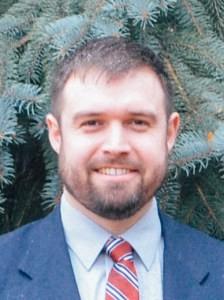![]() Metal 3D printing has come a long way towards being more affordable and accessible in the past year, but it still has a ways to go. It’s still one of the more costly additive manufacturing processes, but the Colorado School of Mines is opening a new lab with the specific purpose of finding ways to drive down those costs. The lab, dedicated to the research and development of metal 3D printing processes, will be part of the new CoorsTek Center for Applied Science and Engineering, which is scheduled to begin construction in early 2016.
Metal 3D printing has come a long way towards being more affordable and accessible in the past year, but it still has a ways to go. It’s still one of the more costly additive manufacturing processes, but the Colorado School of Mines is opening a new lab with the specific purpose of finding ways to drive down those costs. The lab, dedicated to the research and development of metal 3D printing processes, will be part of the new CoorsTek Center for Applied Science and Engineering, which is scheduled to begin construction in early 2016.
The lab is being funded by a $2.5 million grant from the Colorado Office of Economic Development and International Trade, whose Advanced Industry Accelerator Grant Program supports projects designed to facilitate collaboration within technical industries. The Colorado School of Mines is one of five recipients of this year’s grant, and the money will be used over the next year to cover the lab’s operations and startup costs. The lab will be run as a consortium, in which companies will pay a fee to set the lab’s research agenda. The university has already received an additional $4.5 million from the first four consortium members: Lockheed Martin, Ball Aerospace, Faustson Tool, and Manufacturer’s Edge.
![]() The lab’s initial focus will be on 3D printed parts for aerospace applications, where some of the most important growth in metal additive manufacturing is taking place. The technology shows a great deal of promise for the industry, but further work needs to be done to improve cost-effectiveness and ensure safety. Those will be major priorities for the lab, according to mechanical engineering professor Douglas Van Bossuyt, who, along with fellow mechanical engineering professor Aaron Stebner, was the official recipient of the grant.
The lab’s initial focus will be on 3D printed parts for aerospace applications, where some of the most important growth in metal additive manufacturing is taking place. The technology shows a great deal of promise for the industry, but further work needs to be done to improve cost-effectiveness and ensure safety. Those will be major priorities for the lab, according to mechanical engineering professor Douglas Van Bossuyt, who, along with fellow mechanical engineering professor Aaron Stebner, was the official recipient of the grant.
“The big enemy of anything going into space is money,” Van Bossuyt said. “Every pound of stuff going into space is $10,000, so shaving weight shaves money. But with things that are 3-D-printed, they’re not as well understood, so the factor of safety is much higher.”
To address these concerns, the lab will purchase equipment to perform a series of tests on 3D printed sample parts, Durability and safety will be assessed, as well as how well the parts fit particular design models. A database will also be created to document which printer settings produce the best industry-certified parts.
“It will help us to intelligently understand what knobs to adjust to get the printed characteristics that we want,” Van Bossuyt said. “Companies that are working with the center can make sure that their 3-D printers are calibrated correctly.”
The first year of operation will be devoted to the study of titanium and nickel parts; such a narrow focus will ensure thorough testing and analysis of each material. In the future, however, the school hopes to expand the lab’s consortium to include other industries such as energy, infrastructure, bioscience and advanced manufacturing. According to Van Bossuyt, branches of the military and foreign agencies have already expressed interest in membership. Discuss this story here.
Subscribe to Our Email Newsletter
Stay up-to-date on all the latest news from the 3D printing industry and receive information and offers from third party vendors.
You May Also Like
Precision at the Microscale: UK Researchers Advance Medical Devices with BMF’s 3D Printing Tech
University of Nottingham researchers are using Boston Micro Fabrication‘s (BMF) 3D printing technology to develop medical devices that improve compatibility with human tissue. Funded by a UK grant, this project...
3D Printing Webinar and Event Roundup: April 21, 2024
It’s another busy week of webinars and events, starting with Hannover Messe in Germany and continuing with Metalcasting Congress, Chinaplas, TechBlick’s Innovation Festival, and more. Stratasys continues its advanced training...
3D Printing Webinar and Event Roundup: March 17, 2024
It’s another busy week of webinars and events, including SALMED 2024 and AM Forum in Berlin. Stratasys continues its in-person training and is offering two webinars, ASTM is holding a...
3D Printed Micro Antenna is 15% Smaller and 6X Lighter
Horizon Microtechnologies has achieved success in creating a high-frequency D-Band horn antenna through micro 3D printing. However, this achievement did not rely solely on 3D printing; it involved a combination...































